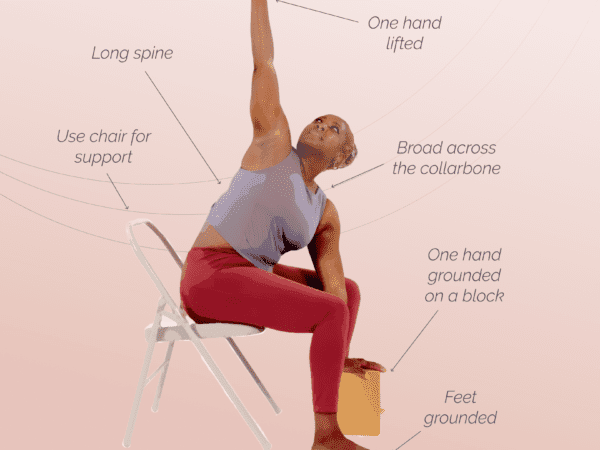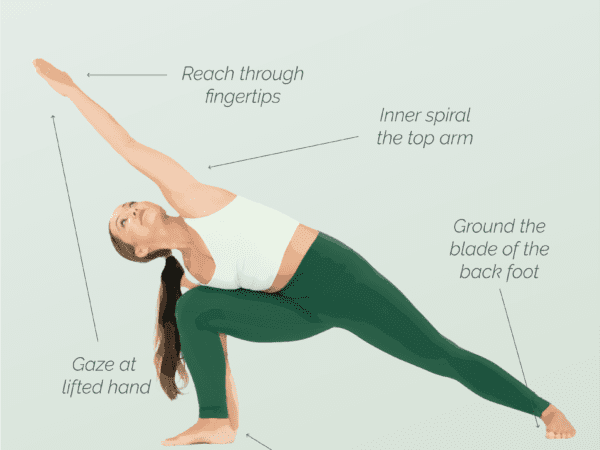Welcome to our guide on mastering the modified three-legged downward-facing dog! Whether you’re a seasoned yogi looking to deepen your practice or a beginner eager to explore new poses, this variation offers a refreshing twist to the classic downward-facing dog. In this blog post, we’ll break down the steps, benefits, and variations of this pose, empowering you to enhance your strength, flexibility, and mindfulness on the mat. Let’s dive in!
Benefits of modified three-legged downward-facing dog
Downward dog is a yoga pose that comes up again and again in most practices. From improved flexibility and strength to enhanced circulation and stress relief, this modified version of the pose offers a gentle yet powerful way to invigorate both body and mind. Here are some benefits of the pose.
Strengthens: Engages and strengthens the arms, shoulders, core, and legs.
Improves Balance: Enhances balance and stability through the modified leg lift.
Increases Flexibility: Helps improve flexibility in the spine and hips.
Calms the Mind: Promotes relaxation and a sense of calm through focused breathing.
Builds Awareness: Develops body awareness and alignment in a modified inversion pose.
Contraindications of modified three-legged downward facing dog
As we embark on our journey to explore the modified downward facing dog pose, it’s essential to also understand its contraindications. While this versatile variation brings numerous benefits to practitioners of all levels, it may not be suitable for everyone due to certain physical limitations or medical conditions. Let’s explore how to navigate these considerations and ensure that your yoga journey is both fulfilling and supportive of your individual needs.
Wrist Issues: Individuals with wrist injuries or conditions should be cautious due to the weight-bearing nature of the pose.
High Blood Pressure: Those with uncontrolled high blood pressure may need to avoid holding the pose for an extended period.
Pregnancy: Pregnant individuals, especially in later stages, should modify or avoid this pose to prevent strain on the abdomen.
Neck or Spine Injuries: People with neck or spine injuries should approach this pose with care or under the guidance of a qualified instructor.
Carpal Tunnel Syndrome: Those with carpal tunnel syndrome may find the pose exacerbates their symptoms and should proceed with caution.
How to do modified three-legged downward facing dog
Start on your hands and knees in a tabletop position, aligning your wrists under your shoulders and your knees under your hips.
Walk your hands forward and lower your head to create a straight line from your hands to your hips. You’re elbows are straight, and you are still on your knees. This is a variation of downward dog that you can use when you want to put less weight on your hands and less strain on the back of your legs.
Engage your core muscles to support your lower back and lengthen your spine.
Press firmly into the mat with your hands and the grounded knee to maintain stability.
Extend one leg and then lift it behind you, keeping the hips squared and the foot flexed.
Hold this modified three-legged downward facing dog for a few breaths, focusing on alignment and breathing deeply.
To release, gently lower the lifted leg back to the mat and return to the tabletop position.
Repeat the pose on the other side to balance the stretch and strength benefits.
Other variations
Unlock the full potential of this yoga pose by exploring the myriad variations of the modified three-legged downward facing dog pose. From bolstering your alignment to deepening your stretch, these variations offer a wealth of possibilities for practitioners of all levels. However, to truly reap the benefits and ensure a safe practice, incorporating props becomes paramount. In this blog section, we’ll delve into the significance of utilizing props and explore a diverse array of modified downward dog variations.
Whether you’re seeking to customize your practice for specific needs or simply craving a fresh perspective, let’s embark on a journey of discovery through the rich tapestry of modified downward facing dog variations.
Three-Legged Downward Facing Dog with Bent Knees: Instead of straightening your legs fully, keep a generous bend in the knees to reduce strain on the hamstrings and lower back.
Three-Legged Downward Facing Dog on Forearms: Lower down to your forearms while in the pose to decrease the intensity on the wrists and shoulders, making it more accessible for those with wrist issues.
Three-Legged Downward Facing Dog with Blocks: Place yoga blocks under your hands to elevate the floor, reducing the distance you need to reach and making it easier to maintain proper alignment.
Downward Facing Dog with a Chair: Use a chair to support your hands, allowing for a gentler stretch and less weight bearing on the upper body, ideal for beginners or individuals with limited upper body strength.
Additional tips
Focus on your breath: Remember to breathe deeply and steadily throughout the asana to enhance relaxation and focus.
Listen to your body: Pay attention to any discomfort or pain and adjust the pose or come out of it if needed to prevent injury.
Engage your core: Keep your abdominal muscles activated to support your lower back and maintain stability in the pose.
Relax your neck: Avoid tensing your neck and shoulders; let your head hang freely or gaze towards your navel to release tension.
Warm-up: Prior to attempting the pose, warm up your body with gentle stretches to prepare your muscles and joints for the movement.
Practice regularly: Consistent practice will help improve your strength, flexibility, and alignment in the pose over time.
Mastering the modified three-legged downward facing dog can bring a myriad of benefits to your yoga practice, from strength and flexibility to balance and mindfulness. By exploring different variations and modifications of this pose, you can tailor it to your current level and gradually progress at your own pace. Remember to approach the pose with awareness, respect your body’s limits, and enjoy the journey of growth and self-discovery on the mat. Incorporate these tips and variations into your practice to deepen your connection with this rejuvenating yoga pose. Embrace the journey of exploration and transformation as you continue to evolve in your yoga practice.
Are you looking for more guidance on your yoga journey? Sign up for Omstars to get access to thousands of yoga classes in the comfort of your own home. Click here to start your subscription.










